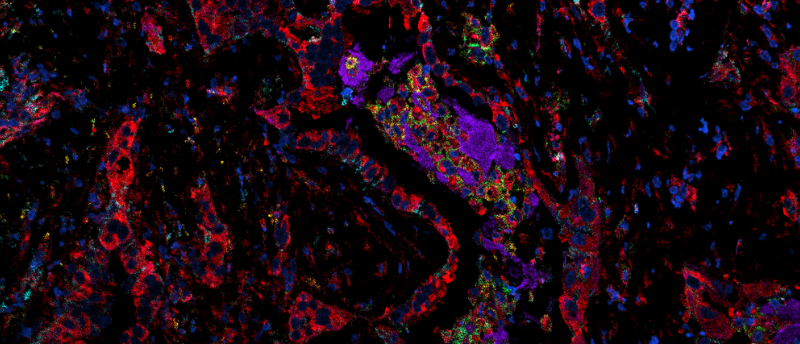Q&A: Spatial approaches to cancer research


Couldn’t make the live Q&A for our webinar on spatial approaches to cancer research, or didn’t get your questions answered?
Here we present your questions to the expert presenter from the webinar so that nothing is missed. Get the responses from Sabrina Lewis, a PhD student at the Walter and Eliza Hall Institute of Medical Research (Melbourne, Australia), below!
Many of the methods you have described examine RNA. Are there ways to examine DNA in tissue?
Yes, spatial genomics methods are rapidly developing. For example, seqFISH has been adapted for the genome, to study chromosome structures and nuclear organisation.
Can any of the current methods be adapted to a 3D tissue context for use in whole organs/tumors?
Many cellular-level methods (e.g. Confetti, LeGO) can be adapted for 3D imaging. However, it’s far more difficult to achieve this in multiplexed RNA and protein imaging studies. Some RNA/protein methods have demonstrated that it’s possible to achieve limited 3D resolution by imaging sequential tissue sections.
Are there any methods that demonstrate a true multimodal approach i.e. multiple target types in a single tissue section?
Yes, true multimodal approaches have been demonstrated.
e.g. Takei Y, Yun J, Zheng S et al. “Integrated spatial genomics reveals global architecture of single nuclei.” Nature 590, 7845, 344–350 (2021).
Schulz D, Zanotelli VRT, Fischer JR et al. “Simultaneous Multiplexed Imaging of mRNA and Proteins with Subcellular Resolution in Breast Cancer Tissue Samples by Mass Cytometry.” Cell Syst. 6(1) 25–36.e5 (2018).
What technique would you recommend to someone interested in entering the spatial omics and cancer field?
This is very dependent on the research question you’re hoping to answer. For questions that require whole transcriptome analysis, sequencing-based spatial transcriptomics is a good starting point. This method has been commercialised (10x Genomics) and is easier to implement in the lab than other methods. However, for single cell/molecule resolution, MERFISH and seqFISH are great methods. These are quite difficult to implement but commercialised products are on (or soon to be on) the market.
Is it possible to examine the epigenome (DNA methylation/histone modification) in a spatial context?
Yes. For example, a recent preprint showed that histone modifications can be examined using MERFISH. However, this is still a developing field.
Dynamic cellular changes in live tissue can provide really valuable information about a tumor. Have any of these spatial omics approaches been adapted for live tissue?
Clonal optical barcoding methods can be used in live tissue e.g. multiphoton microscopy to image cells in vivo. Novel methods also show that scRNAseq can be performed on live cells and mapped back to tissue sections. However, these methods are still being developed for single-cell resolution.
What is the diagnostic application of this approach?
The presence or absence of various genetic markers can be used to diagnose some cancer types. Multiplexed or multimodal approaches enable detection of a large number of biomarkers and may facilitate personalized therapies for patients.
Any breakthrough scientific results (successes?)
Breakthrough scientific results have been limited but many smaller discoveries have been made. However, these multiplexed spatial methods allow potential discoveries to be made that are not possible with non-multiplexed/non-spatial technologies.
Is spatial technology used in clinics or will it be in the future?
We hope multiplexed spatial technologies will transform the way patients are diagnosed in the future. Currently, non-multiplexed fluorescence in situ hybridization (FISH) can be used to diagnose some types/subtypes of cancer.
You can catch up on the full webinar on demand here!







